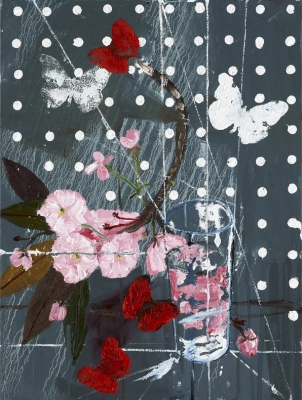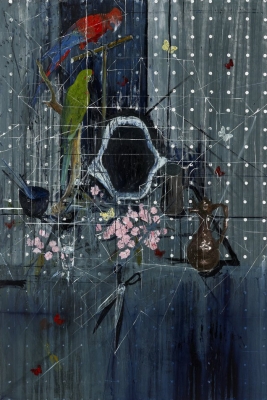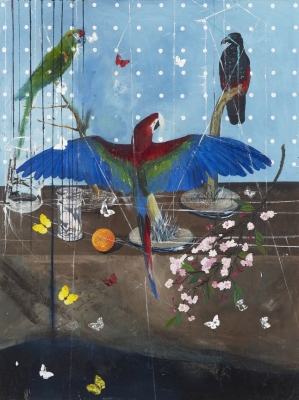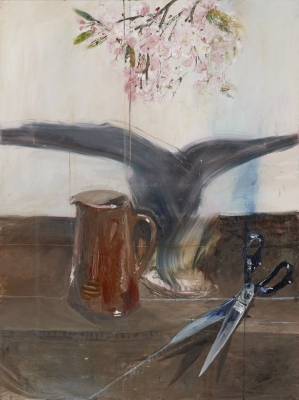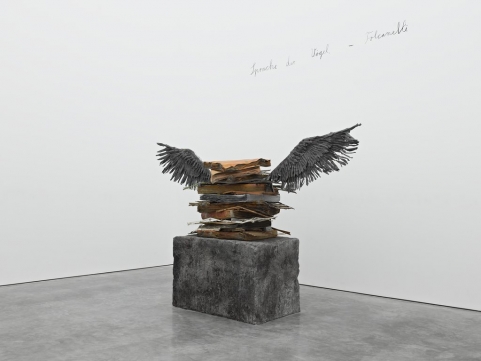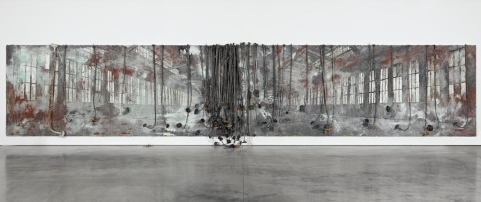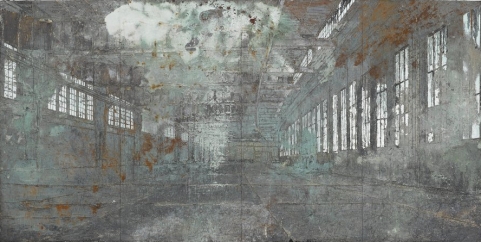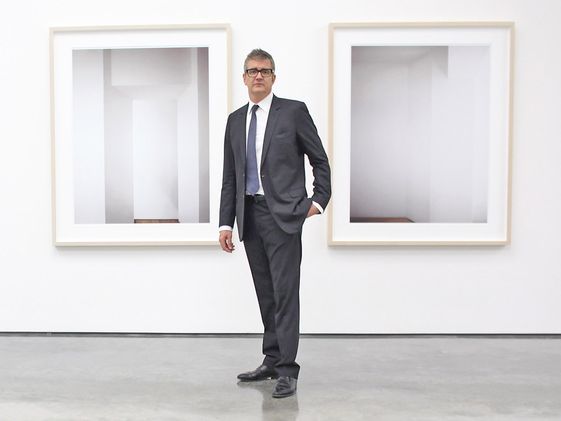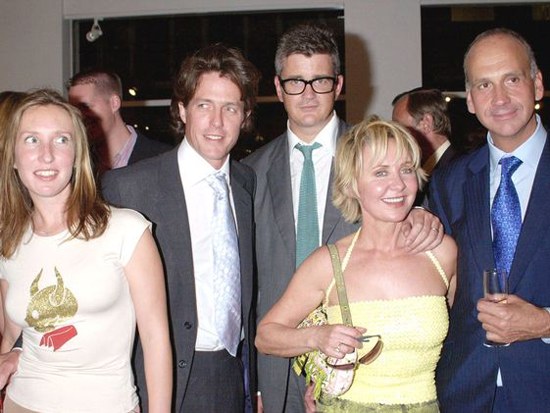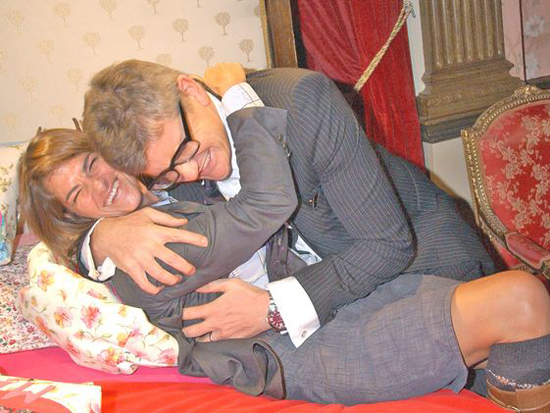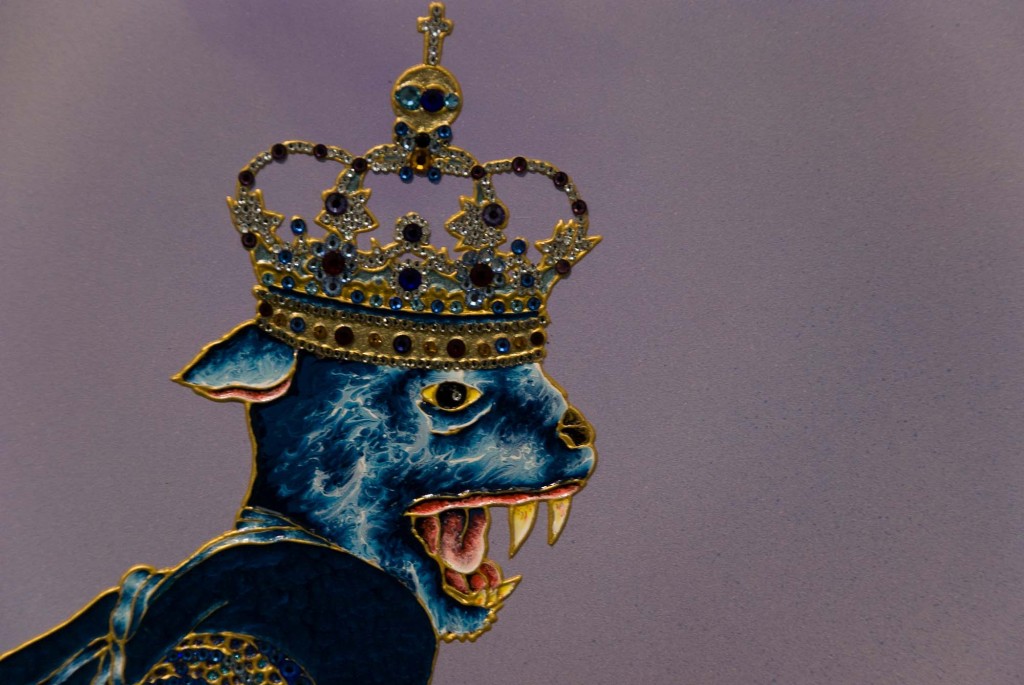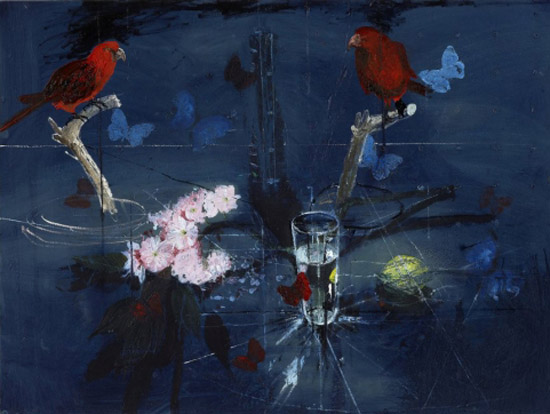
A NO NAME piace molto Damien Hirst. Qualcuno se ne sarà accorto. È una specie di venerazione, lo ammetto. Non acritica, però. Come i veri amanti, sono molto esigente. E certe cose è meglio non lasciarle passare senza dire niente.
Dopo aver visto la bellissima mostra in corso alla Tate Modern stavo per scrivere che Hirst, decidendo di non esporre neanche un quadro della serie realizzata con le sue mani, aveva in qualche modo dichiarato che quella con i quadri “à la Bacon” era una strada ormai abbandonata. Non l’ho scritto. Per fortuna. A smentire questo mio wishfull thinking è la mostra “Two Weeks One Summer” in corso nella sede di White Cube a Bermondsey Street. La mostra non l’ho vista, ma mi ricordo che già nel 2009, con “No Love Lost – Blue Paintings” alla Wallace Collection, si alzò un coro di disapprovazione. Andai a vederla e non mi dispiacque poi molto. Azzardai un commento quasi positivo. Quello non era neanche il primo tentativo. Nei mesi precedenti, infatti, Hirst aveva esposto quadri a Kiev al Pinchuk Art Centre nella mostra “Requiem”.
Ma a guardare su internet i quadri esposti nella super galleria di Jay Jopling, c’è da rimanere parecchio perplessi. A confermare l’impressione la spietata recensione che Jonathan Jones ha fatto sul Guardian. Eccone qualche passaggio:
(…) Scherzi a parte, signor Hirst, sto parlando con lei. Sembra che non abbia nessuno intorno a lei che le dica: ora basta. Lasci perdere. Le dico questo non da nemico, ma da ammiratore di lunga data. Nessun incontro con un’opera d’arte contemporanea mi ha mai emozionato come la volta che entrai, nel 1992, alla Saatchi Gallery e vidi uno squalo tigre farmi le boccacce. Ma questi dipinti sono un sacrilegio per l’arte. Ognuno di questi dipinti – dal pappagallo in gabbia fino ai fiori e alle farfalle – fa a pugni la pittura figurativa e non riesce ad avvicinarsi, non solo alla maestria, ma alla competenza minima.
(…) Se Hirst non avesse cercato di dipingere un arancio con precisione, nessuno avrebbe saputo che non lo sa fare. Ma lui ci ha provato, almeno io penso che sia un arancio, e la misera sfera sembra fluttuare a mezz’aria a causa del goffo cerchio di ombra che le sta sotto. Per un momento ho pensato che fosse intenzionale, poi ho capito che era un problema di competenza. Questi problemi abbondano. Guardi un ramo e capisci subito che ci ha lavorato su, ma è anche ovvio che è lavoro sprecato. Al loro meglio questi quadri non valgono quelli delle migliaia di artisti della domenica che dipingono in giro per la Gran Bretagna. La differenza è che lui può permettersi degli stupidi che lo paragonino a Caravaggio (il riferimento è al saggio in catalogo, ndr).
Questa mostra è un avvertimento ai giovani artisti. A 18 anni, si può diventare come Damien Hirst, quando ne aveva 30. Ma superati i 40 anni, Hirst vuole a quanto pare essere l’artista che sarebbe potuto essere, chissà, se avesse trascorso la sua giovinezza a disegnare. Ha iniziato troppo tardi. Ora sembra un tiranno perso in un mondo di specchi, come il bambino più sopravvalutato del mondo, come un disonore per la sua, la mia, generazione. Siamo questo fallimento?
Io non so se sarei stato così severo. Forse no. Eppure c’è una cosa che mi rende simpatico Hirst anche in questa caduta plateale. E cioè che avrebbe potuto non farlo. Avrebbe potuto continuare con le solite cose che ormai ripete da dieci anni. E invece ci ha provato e si è rimesso in gioco. E ha fallito. Alla grande. Anche solo per questo andrebbe stimato.

NO NAME really likes Damien Hirst. Someone would have noticed. It’s a kind of veneration, I admit. Not uncritical, however. How true lovers, I am very picky. Ad it is better to say certain things
After seeing the beautiful exhibition at the Tate Modern, I was going to write that Hirst, deciding not to expose even a picture of the series made with his hands, had somehow said that the pictures “a la Bacon” was a road now abandoned. I did not write it. Fortunately. To refute this wishfull thinking is the exhibition “Two Weeks One Summer” in progress at White Cube in Bermondsey Street. I have not seen the show, but I remember that back in 2009 with “No Love Lost – Blue Paintings” at the Wallace Collection, a chorus of disapproval rose. I went to see it and I did not mind much. I ventured a comment almost positive. That he was not the first attempt. In the months before, in fact, Hirst had exhibited paintings at the Pinchuk Art Centre in Kiev in the exhibition “Requiem”.
But it is quite perplexing seeing online the canvas exhibited in the Jay Jopling’s super gallery. Jonathan Jones confirms the impression with his harsh review in The Guardian. Here are some steps:
(…) Seriously – Mr Hirst – I am talking to you. It seems you have no one around you to say this: stop, now. Shut up the shed. I say this as a longtime admirer, not an enemy. No encounter with a contemporary work of art has ever thrilled me like the day I walked into the Saatchi Gallery in 1992 and saw a tiger shark’s maw lurch towards me. But these paintings are abominations unto the lord of Art. They dismantle themselves. Each of these paintings – from the parrot in a cage to the blossoms and butterflies – takes on the difficulties of representational painting and visibly fails to come close, not merely to mastery, but to basic competence.
If Hirst did not try to paint an orange accurately, no one would know he can’t do it. But he has tried, at least I think it’s an orange, and the poor sphere seems to float in mid air because of the clumsy circle of shadow below it. For a moment I thought this was intentional, then I realised it was a competence issue. Such issues abound. You look at a branch and it is obvious he has worked at it: equally obvious the work was wasted. At their very best these paintings lack the skill of thousands of amateur artists who paint at weekends all over Britain – and yet he can hire fools to compare him with Caravaggio.
This exhibition is a warning to young artists. At 18, you may long to be Damien Hirst when he was 30. But in his 40s, Hirst apparently wishes he was the artist that, who knows, he might have been, had he spent his youth drawing day after day after day. He has left it too late. Instead he looks like a tyrant lost in a world of mirrors, like the world’s most overpraised child, like a disgrace to his, my, generation. Are we this bankrupt?
I do not know if I would be so severe. Maybe not. Yet there is one thing that makes me sympathetic Hirst also in this fall: he could not do it. He could have continued with the usual things now repeated for ten years. But he tried it. And he has failed. Completely. Even for this should be estimated.
